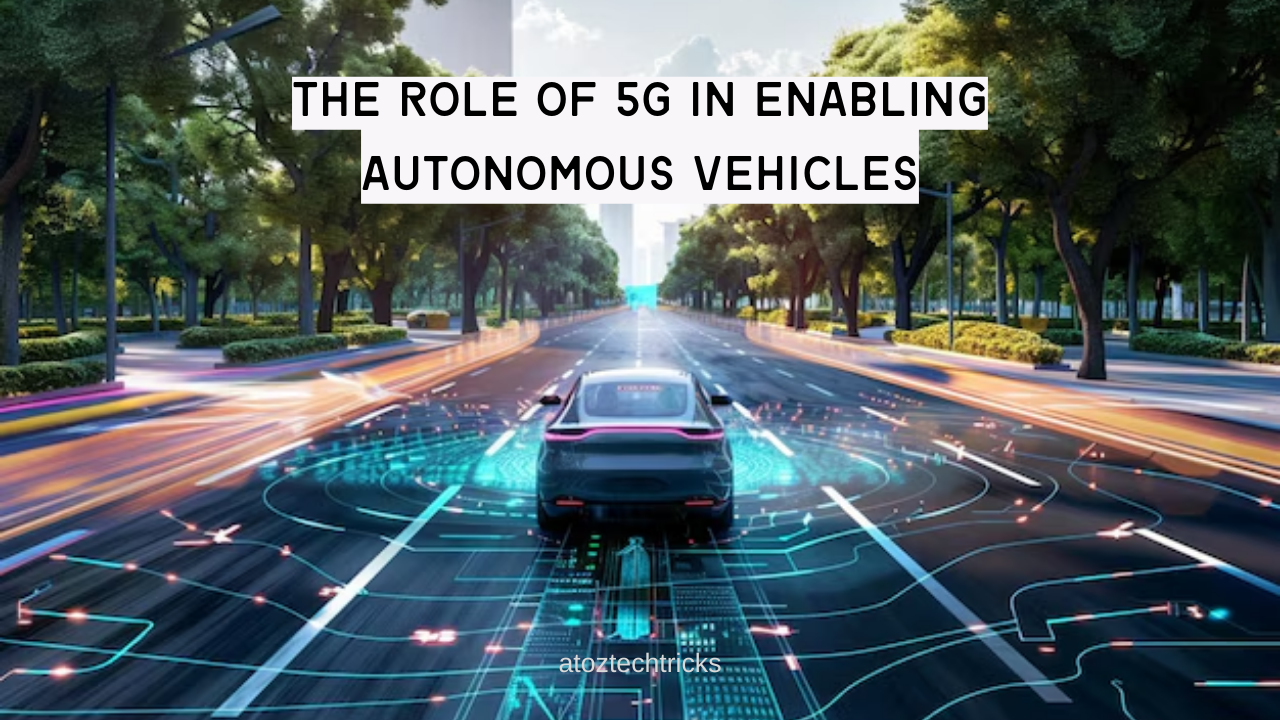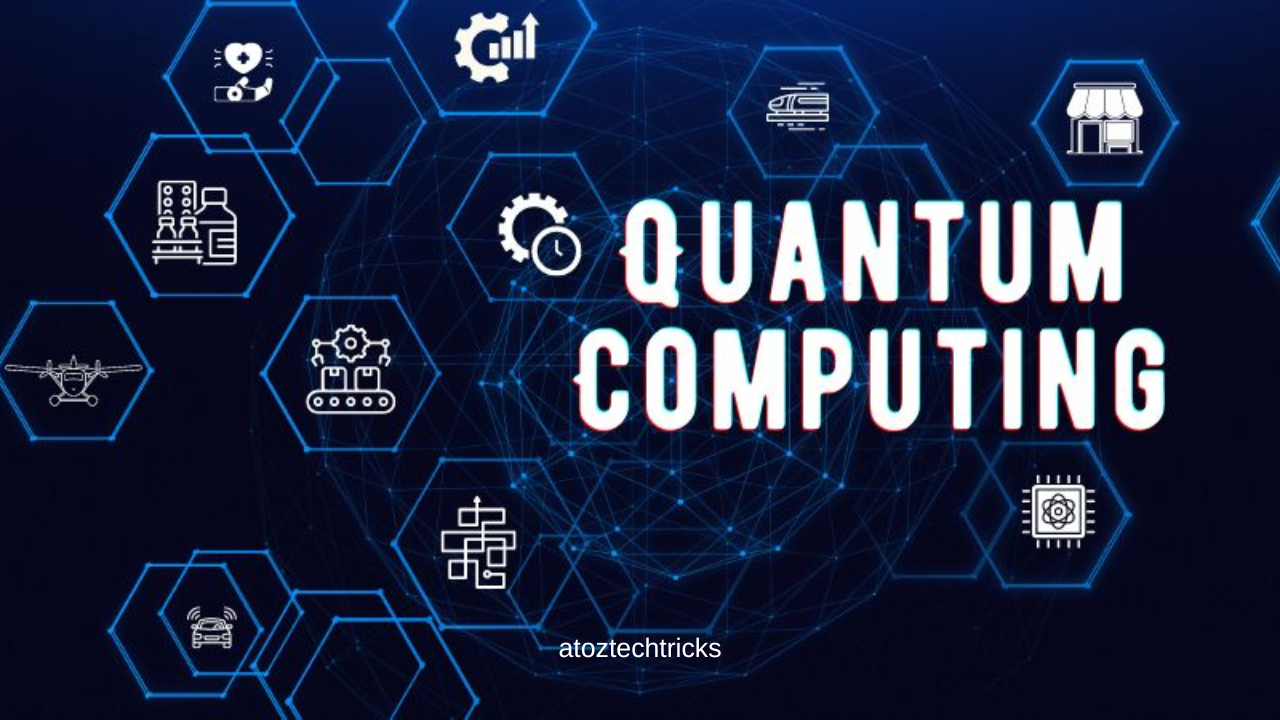Driving into the Future: How 5G is Revolutionizing Autonomous Vehicles
The dawn of 5G technology marks a significant turning point in various sectors, particularly in the automotive industry. As the world edges closer to realizing the dream of fully autonomous vehicles, 5G is proving to be the crucial backbone needed to support this transition. This article delves into the myriad ways in which 5G is revolutionizing autonomous vehicles, examining its impact on safety, efficiency, communication, and the broader implications for society.
The Evolution of Autonomous Vehicles
Before exploring the transformative role of 5G, it is essential to understand the evolution of autonomous vehicles. The journey began decades ago with the introduction of basic driver-assistance systems such as cruise control and anti-lock brakes. Over the years, advancements in artificial intelligence (AI), machine learning, and sensor technologies have propelled the development of vehicles capable of more complex tasks, such as lane-keeping and automated parking.
However, the transition from semi-autonomous to fully autonomous vehicles—capable of navigating without human intervention—requires overcoming significant technological challenges. The most critical of these is ensuring that vehicles can process vast amounts of data in real time, make split-second decisions, and communicate seamlessly with other vehicles and infrastructure. This is where 5G comes into play.
What is 5G?
5G, or the fifth generation of wireless technology, represents a significant leap forward from its predecessors. Unlike 4G, which primarily enhanced mobile internet speeds, 5G is designed to support a wide array of applications, from smart cities to industrial automation. Its key features include ultra-low latency, massive device connectivity, and significantly higher data transfer speeds. These attributes make 5G uniquely suited to meet the demands of autonomous vehicles.
Enhancing Communication: Vehicle-to-Everything (V2X)
One of the most critical ways 5G is revolutionizing autonomous vehicles is through Vehicle-to-Everything (V2X) communication. V2X encompasses several types of communication, including Vehicle-to-Vehicle (V2V), Vehicle-to-Infrastructure (V2I), and Vehicle-to-Pedestrian (V2P). These communication systems enable vehicles to share data, with traffic signals, road infrastructure, and even with pedestrians.
Vehicle-to-Vehicle (V2V) Communication
V2V communication allows autonomous vehicles to exchange information about their speed, position, and direction with other nearby vehicles. This real-time data exchange can significantly enhance road safety by preventing collisions. For example, if a car suddenly brakes, it can instantly relay this information to the vehicle behind it, allowing the following car to brake sooner and avoid a crash.
5G’s ultra-low latency is crucial in this context. Latency refers to the time it takes for data to travel from one point to another. With 5G, latency can be reduced to as low as one millisecond, ensuring that information is transmitted almost instantaneously. This level of responsiveness is vital for the safe operation of autonomous vehicles, where even a fraction of a second can make the difference between a near-miss and a catastrophic accident.
Vehicle-to-Infrastructure (V2I) Communication
V2I communication involves the interaction between vehicles and road infrastructure, such as traffic lights, road signs, and parking spaces. With 5G, autonomous vehicles can receive real-time updates from traffic management systems, allowing them to adjust their routes to avoid congestion, find the nearest available parking spot, or navigate through construction zones safely.
This communication also facilitates more efficient traffic flow. For instance, traffic lights equipped with 5G technology can communicate with approaching vehicles to optimize signal timing, reducing idling time at intersections and improving fuel efficiency. In a future where all vehicles are autonomous and connected via 5G, traffic jams could become a thing of the past.
Vehicle-to-Pedestrian (V2P) Communication
V2P communication is another crucial aspect of 5G’s role in autonomous vehicles. By connecting vehicles with smartphones and wearable devices, V2P enables cars to detect pedestrians and cyclists, even if they are out of the driver’s line of sight. This capability is especially important in urban areas, where interactions between vehicles and pedestrians are frequent.
For example, if a pedestrian steps off the curb and into a crosswalk, their smartphone could send a signal to nearby autonomous vehicles, alerting them to slow down or stop. 5G’s fast data transmission ensures that these signals are processed and acted upon almost instantaneously, significantly enhancing pedestrian safety.

Real-Time Data Processing and AI Integration
Autonomous vehicles rely on a vast array of sensors, including cameras, radar, lidar, and ultrasonic sensors, to perceive their environment. These sensors generate enormous amounts of data that must be processed in real time to enable the vehicle to make safe driving decisions. Traditional computing systems struggle to handle this data deluge efficiently, leading to latency issues that can compromise safety.
5G addresses this challenge by enabling edge computing, a technology that processes data closer to the source rather than relying on distant data centres. With edge computing, autonomous vehicles can process sensor data locally, reducing the time it takes to analyze information and make driving decisions. This capability is crucial for navigating complex environments, such as city streets, where quick decision-making is essential.
Furthermore, 5G’s high-speed connectivity allows autonomous vehicles to access cloud-based AI algorithms for more sophisticated data analysis. For example, a vehicle’s onboard AI might detect an object on the road but be unsure whether it is a harmless piece of debris or a potentially dangerous obstacle. By sending the data to the cloud, the vehicle can leverage more powerful AI systems to make a more accurate determination and respond accordingly.
Enhanced Safety and Reliability
Safety is paramount in the development of autonomous vehicles, and 5G plays a crucial role in enhancing the reliability and security of these systems. One of the primary concerns with autonomous vehicles is the potential for system failures or cyberattacks that could endanger passengers and other road users.
Redundancy and Reliability
5G technology enhances the reliability of autonomous vehicles by providing redundant communication pathways. In the event of a failure in one communication channel, the vehicle can seamlessly switch to another without losing connectivity. This redundancy is vital for ensuring that autonomous vehicles remain operational even in challenging conditions, such as during a natural disaster or in areas with poor network coverage.
Implementing 5G in Smart Cities: Transforming Urban Landscapes
Cybersecurity
The increased connectivity enabled by 5G also raises cybersecurity concerns. Autonomous vehicles are essentially mobile computers, making them potential targets for hackers. However, 5G networks are designed with robust security features, including encryption, authentication, and network slicing, which can help protect vehicles from cyber threats.
Network slicing is particularly important in the context of autonomous vehicles. It allows operators to create virtual networks tailored to specific applications, such as autonomous driving, with dedicated resources and security protocols. This ensures that critical communication between vehicles and infrastructure is isolated from other network traffic, reducing the risk of interference or cyberattacks.
Transforming the Driving Experience
Beyond safety and efficiency, 5G is poised to transform the driving experience in ways that were previously unimaginable. As autonomous vehicles become more prevalent, they will redefine what it means to “drive” and open up new possibilities for in-car entertainment, productivity, and comfort.
In-Car Entertainment and Connectivity
With 5G, vehicles will become extensions of our digital lives, offering seamless connectivity and a wide range of entertainment options. Passengers in autonomous vehicles will be able to stream high-definition videos, play online games, or participate in virtual reality experiences, all without worrying about buffering or latency.
In addition to entertainment, 5G will enable new forms of communication and collaboration. For instance, business travellers could conduct video conferences or work on cloud-based projects while on the road, turning travel time into productive time. The high-speed connectivity offered by 5G will make it possible to download large files, access remote desktops, and use bandwidth-intensive applications with ease.
Personalization and AI Assistants
As autonomous vehicles become more advanced, they will also become more personalized. 5G connectivity will allow vehicles to integrate with personal AI assistants, such as Amazon Alexa or Google Assistant, enabling passengers to control in-car settings, manage their schedules, and access personalized recommendations based on their preferences.
For example, an AI assistant could learn a passenger’s favourite coffee order and automatically direct the vehicle to a nearby coffee shop when it detects that the passenger is feeling drowsy. Similarly, the vehicle could adjust the cabin temperature, lighting, and music to match the passenger’s mood, creating a more comfortable and enjoyable ride.
The Economic and Environmental Impact
The widespread adoption of 5G-enabled autonomous vehicles will have far-reaching economic and environmental implications. While the initial costs of deploying 5G infrastructure and developing autonomous technology are significant, the long-term benefits are expected to outweigh these costs, leading to a more efficient, sustainable, and economically viable transportation system.
Reducing Traffic Congestion and Fuel Consumption
One of the most significant economic benefits of autonomous vehicles is their potential to reduce traffic congestion. By communicating with each other and with traffic management systems via 5G, autonomous vehicles can optimize their routes, avoid bottlenecks, and maintain a steady flow of traffic. This efficiency not only saves time for commuters but also reduces fuel consumption, leading to lower transportation costs and decreased greenhouse gas emissions.
In addition to reducing congestion, autonomous vehicles can also improve fuel efficiency through more precise driving. For example, autonomous vehicles can accelerate and brake more smoothly than human drivers, reducing fuel consumption by minimizing sudden starts and stops. This improvement in fuel efficiency will be particularly important as the world transitions to electric vehicles, helping to extend the range of these vehicles and reduce the energy demand.
Transforming the Automotive Industry
The rise of 5G-enabled autonomous vehicles will also have a profound impact on the automotive industry. Traditional car manufacturers will need to adapt to a new landscape where software and connectivity are just as important as mechanical engineering. This shift will likely lead to increased collaboration between automakers, technology companies, and telecom providers, as they work together to develop the next generation of vehicles.
Moreover, the advent of autonomous vehicles could give rise to new business models and revenue streams. For example, ride-hailing companies like Uber and Lyft could transition to fleets of autonomous vehicles, reducing labour costs and increasing profitability. Similarly, automakers could explore subscription-based services, where customers pay for access to autonomous vehicles on-demand, rather than owning a car outright.
The Road Ahead: Challenges and Opportunities
While the potential benefits of 5G-enabled autonomous vehicles are immense, several challenges must be addressed before they can become a reality. These challenges include regulatory hurdles, public acceptance, and the need for significant infrastructure investment.
Regulatory and Legal Considerations
The deployment of autonomous vehicles raises complex legal and regulatory questions. For instance, who is liable in the event of an accident involving an autonomous vehicle? How should traffic laws be updated to account for self-driving cars? These are just a few of the questions that lawmakers and regulators will need to address as autonomous vehicles become more widespread.
Furthermore, the global nature of the automotive industry means that regulations will need to be harmonized across different countries and regions. This harmonization is essential to ensure that autonomous vehicles can operate seamlessly across borders and that manufacturers can develop vehicles that meet international standards.
Public Acceptance and Trust
Public acceptance is another critical factor in the adoption of autonomous vehicles. While many people are excited about the prospect of self-driving cars, others are more sceptical, particularly when it comes to safety and reliability. Building public trust in autonomous vehicles will require extensive testing, transparent communication, and the demonstration of clear safety benefits.
Education and awareness campaigns will also be crucial in helping the public understand the benefits of 5G-enabled autonomous vehicles and how they can improve safety, reduce congestion, and enhance the overall driving experience.
Infrastructure Investment
The successful deployment of 5G-enabled autonomous vehicles will require significant investment in infrastructure. This includes not only the rollout of 5G networks but also the installation of smart traffic lights, sensors, and other connected infrastructure that can communicate with vehicles. Governments and private companies will need to work together to ensure that this infrastructure is in place, particularly in urban areas where traffic density is highest.
Driving into the Future
The integration of 5G technology into autonomous vehicles represents a monumental leap forward in the evolution of transportation. By enabling ultra-low latency communication, real-time data processing, and enhanced safety features, 5G is paving the way for a future where fully autonomous vehicles are not just a possibility but a reality.

As we drive into the future, 5G will play a pivotal role in shaping the way we travel, transforming our roads into smart, connected environments that prioritize safety, efficiency, and sustainability. While challenges remain, the potential benefits of 5G-enabled autonomous vehicles are too significant to ignore. With continued innovation, collaboration, and investment, the dream of a world where vehicles drive themselves may soon be within our grasp.





Post Comment